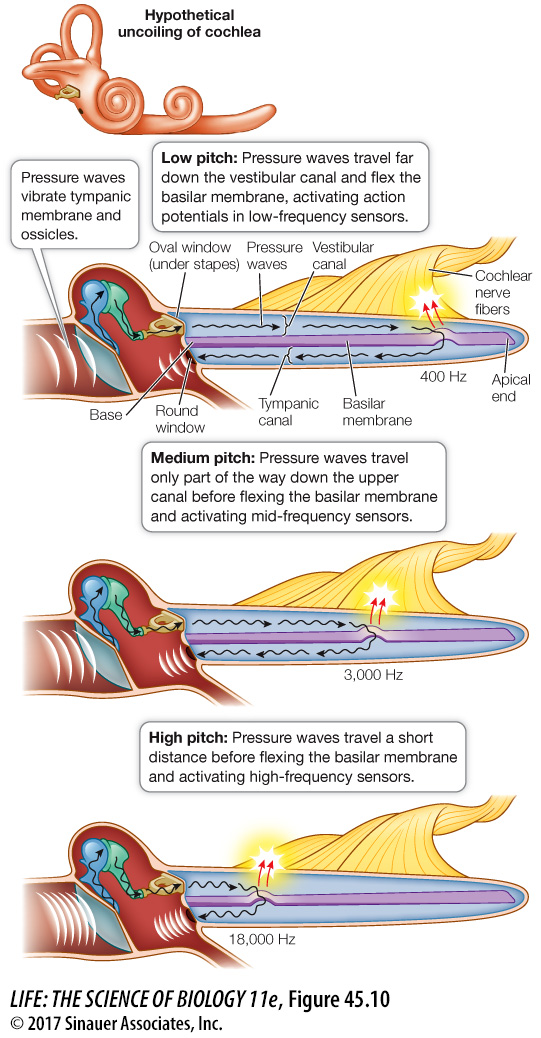What causes the basilar membrane to flex, and how does this mechanism distinguish sounds of different frequencies? Air is highly compressible but fluids are not; therefore a pressure wave can travel through air without displacing much air, whereas a pressure wave in fluid displaces that fluid. When the stapes pushes on the oval window, the fluid in the vestibular canal is displaced. If the movement of the oval window occurs slowly, the cochlear fluid pressure wave travels down the vestibular canal, around the bend, and back through the tympanic canal (Figure 45.10). At the end of the tympanic canal, the displacement pressure is dissipated by the outward bulging of the round window.

Figure 45.10 Sensing Pressure Waves in the Inner Ear Pressure waves of different frequencies flex the basilar membrane at different locations. Information about sound frequency is specified by which hair cells are activated. For simplicity, this representation illustrates the cochlea as uncoiled.
The basilar membrane is not uniform—it is thicker and stiffer at its base and wider and thinner at its apical end. Pressure waves in the cochlear fluid have different frequencies and set up different patterns of traveling waves. High-frequency waves cause maximal flexion at the basal end of the basilar membrane, whereas low-frequency pressure waves result in maximal flexion at the apical end (see Figure 45.10). Thus different pitches of sound flex the basilar membrane at different locations and activate different sets of hair cells. Action potentials stimulated by the mechanoreceptors at different positions along the organ of Corti travel along the cochlear nerve and are transmitted to different regions of the brain’s auditory cortex by the vestibulocochlear nerve.
